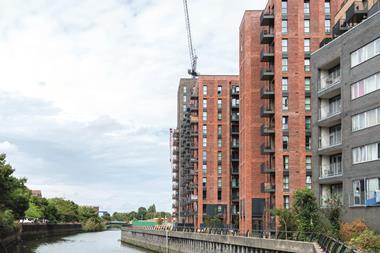Digital connectivity is a key part of the UK’s infrastructure and vital to its future prosperity. However, we still face challenges when it comes to providing good – rather than average – connectivity in the workplace, with London and the UK lagging behind other leading economies.

It is clear that connectivity is now more important than transport links when choosing office space, making the old adage ‘location, location, location’ increasingly outdated.
Our research shows that landlords can boost asset performance by improving connectivity in workspaces and offices. This also highlights the importance for occupiers of strong connectivity in the workplace as an enabler of overall business performance.
The pace of change has been rapid and most landlords have now undertaken work to improve the digital connectivity of their buildings. The key driver has been to increase market appeal – an indication that landlords understand that connectivity is a need-to-have rather than a nice-to-have.
Most landlords have been able to achieve rent increases, reflecting the value of well-connected office buildings. In London and the South East, 7% of landlords secured increases of 10% or more, 32% secured increases of between 5% and 9.9%, and 34% secured increases of between 2% and 4.9%.
In the rest of the UK, 12% of landlords increased rents by 10% or more, 21% increased rents by between 5% and 9.9%, and 21% increased rents by between 2% and 4.9%. In monetary terms, this means achieving up to an additional £8.50/sq ft in prime areas such as London’s West End, up to £7/sq ft in Midtown and £6/sq ft in the City.
Connectivity benefits
Another benefit of investing in connectivity is that around three quarters of landlords across the UK have been able to reduce voids.
The value placed on better-connected offices is also reflected in the views of tenants, but it is not just financial value. Our study shows a clear link between good connectivity, business performance and satisfaction. For 81% of occupiers, a well-connected office means a better-performing business, with 84% saying that employees are more satisfied in their roles when an office is well connected. This increases productivity and enables more flexible working practices.
There is a strong sense that the professional reputation of a business is directly linked to how well connected it is because partners want systems that work and communication that does not break down.

Our research shows that half of those responsible for digital connectivity in their office expect their organisations to pay more for good connectivity. Six per cent said their business would be prepared to pay a premium of more than 10%, 18% would pay between 5% and 10% and 25% would pay between 2% and 4.9%.
Almost three quarters of tenants said that offices that are not well connected would become obsolete spaces – an increase of 10 percentage points on last year – and a sign of how important digital connectivity has become.
Step change
Good connectivity in workplaces is a win-win for landlords and tenants. There is a strong commercial argument for greater investment in connectivity in buildings and landlords are increasingly taking on this responsibility. From an occupier perspective, connectivity is an important consideration when choosing new spaces or renewing leases.
Of course, improving connectivity is not without challenges thanks to historically poor infrastructure and lack of industry collaboration. However, with 5G nearly upon us, there is an opportunity to overcome some of the current problems and make a step change. My money is on those that embrace the next generation of technology and use it to transform buildings and the businesses in them.
To achieve this, the industry needs to scale the learning curve quickly if it is to take maximum advantage of the benefits 5G offers.
John Gravett is head of real estate management at Cluttons






























No comments yet